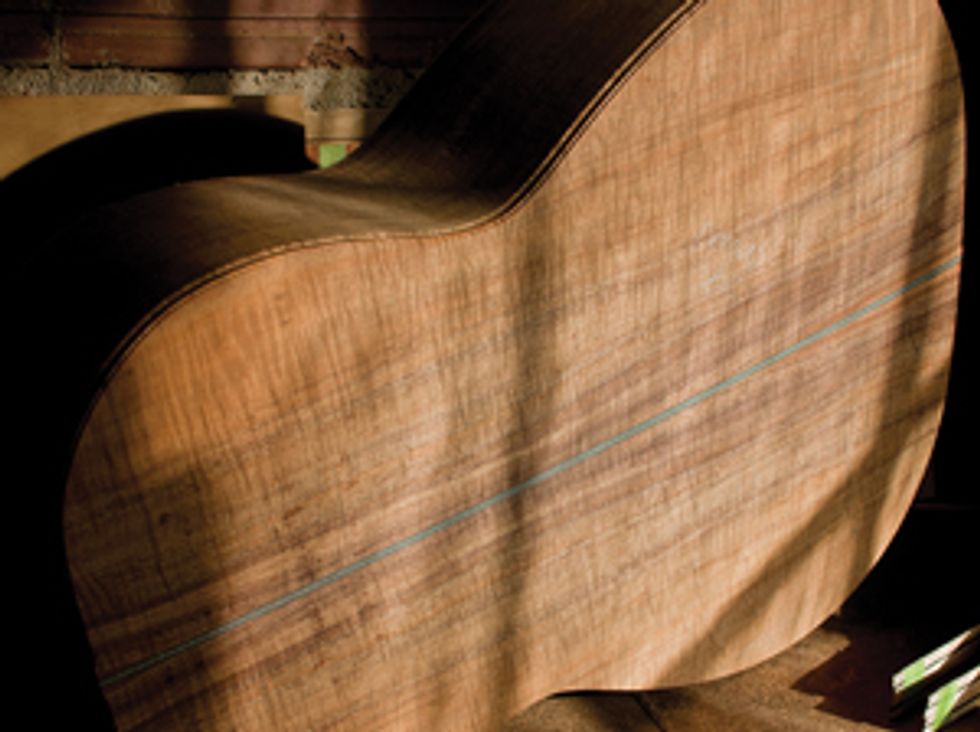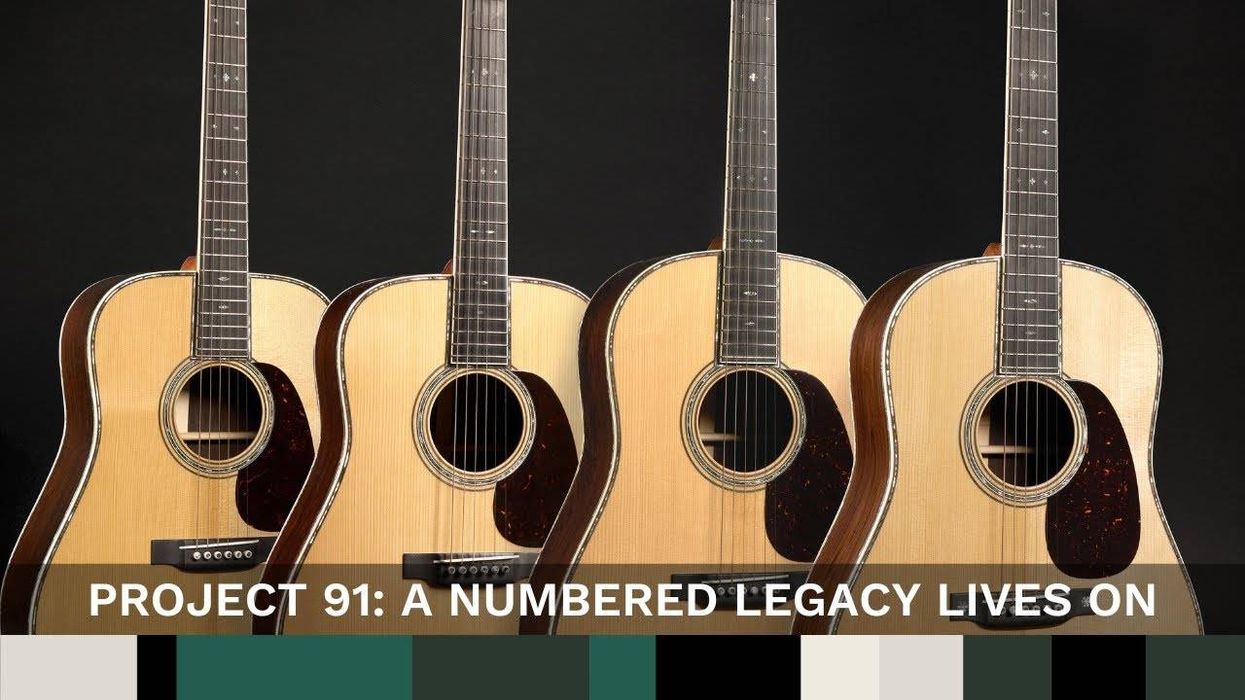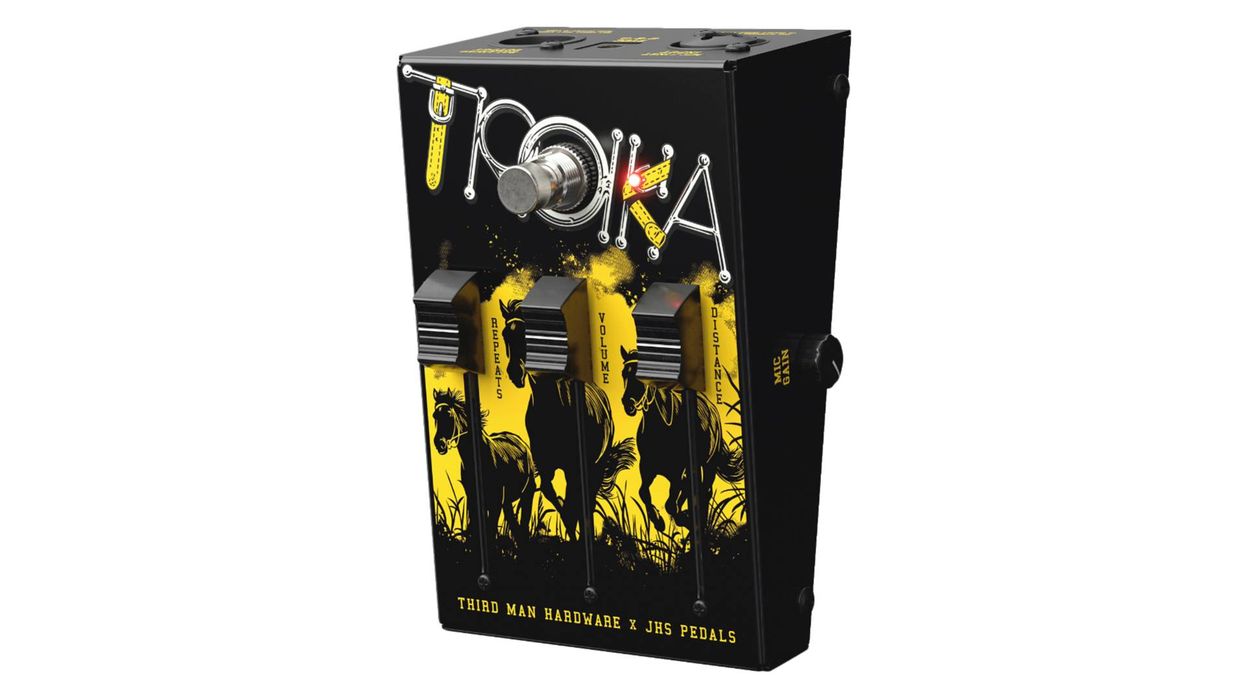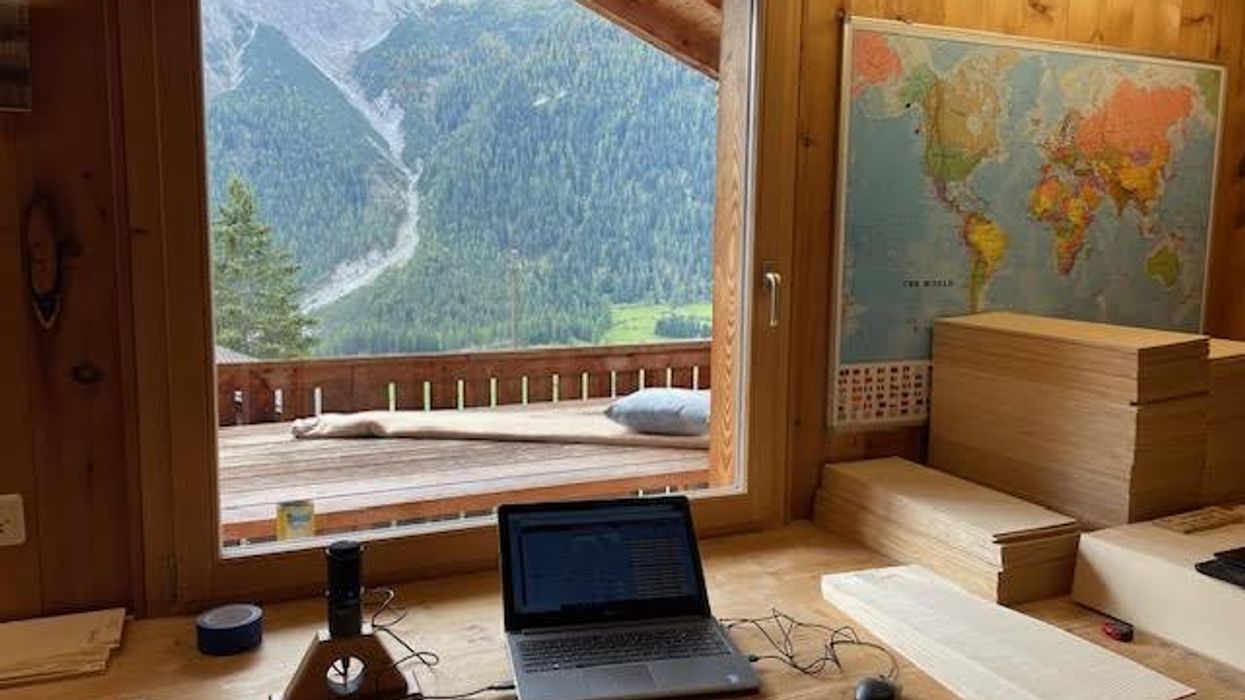
Prized for its beauty, koa possesses tonal characteristics similar to mahogany when used as a back and sides wood, and is one option to consider when planning your custom instrument. Photo by Kimberly Lanier Dalton
In my previous column [“Designing and Ordering a Custom Guitar, Pt. 1,” December 2012], we began discussing the initial steps and process of having a guitar custom built. We talked about choosing a dealer or individual builder, determining the best body shape and size for your needs, and selecting the size and shape of the neck that will be most comfortable for you. This month, let’s take a look at the next step in the process: choosing the woods.
Body Wood Selection
So much has already been written on this
subject that I’d barely be able to scratch
the surface even if I had 10 pages to do it.
What I’ll do is keep it brief and general in
scope by listing some common—and not
so common—woods, and provide rough
characterizations of their tonal properties.
Remember, nothing compares to your own
ear as the best device in helping with your
selection. So, get out and play a bunch of
guitars before making your choice!
Indian rosewood provides warm tone with lots of sustain. The tonal characteristics of this wood will back vocals very well, but can lack in note separation and hinder lead playing. Good-quality Indian rosewood is readily available and it’s a very stable wood over the long haul.
Cocobolo is our favorite, exotic rosewood these days. It has all of the same properties as Indian rosewood, but with an added reverb effect that’s similar to Brazilian rosewood. Brazilian, as many of us know, is in such short supply now that it doesn’t warrant further description. But if you want “Brazilian tone” from a guitar that you can own without having to take a second mortgage on your home, cocobolo might be a good choice for you.
Honduran rosewood is another good Brazilian substitute and is extremely dense, which results in a very glassy and treble-heavy tone. It will produce a lot of volume, but can sound a bit harsh, especially when paired with a dense top-wood such as Appalachian red spruce. Honduran rosewood is also prone to cracking.
Mahogany is less warm, but more woody than Indian rosewood. Notes die-off faster, which creates better separation for leads, and mids and trebles are clearer. While Honduras is no longer the main country of origin, mahogany is still readily available. And though some mahoganies are a little softer than what we used to use, this just makes them a bit harder to work with and won’t have much affect on your guitar’s tone.
Walnut may very well be our favorite mahogany-style back and side wood. With tonal properties very similar to mahogany— but with just a bit more darkness to the tone—walnut is a great “in-between choice” if neither rosewood nor mahogany quite floats your boat.
Koa is certainly hard to beat for sheer beauty, and there is still a bit of it available that’s very nice. Koa’s tone is very mahogany- like, with just a touch more sustain in the treble register.
Australian/Tasmanian blackwood is pretty much the same thing as koa, only it’s not grown in Hawaii. It looks very similar to koa, provides virtually the same tone, and is less expensive.
Top Woods
The soundboard certainly plays a major role
in determining the overall tone of an acoustic
guitar, so let’s take a look at the variety
of top woods, running from some softer
options to the harder and denser.
Western red cedar is a very responsive tonewood with a broad tonal spectrum. Though it’s mostly prized for fingerstyle playing, Western red cedar will take a light flatpick very well. The main drawbacks are its softness— making it prone to scratching and denting easily—and its low-volume ceiling.
Redwood has all the volume and response of cedar, with a bit more insofar as the volume ceiling. Redwood’s dark, red-brown color is very attractive, but this wood can be hard to find.
Engelmann spruce is commonly used as a top wood on guitars built for fingerstyle and light flatpick playing. Engelmann will break up tonally if played too hard, but not as quickly as cedar. Its common drawback is the occurrence of “run out,” which causes a visual light/dark effect, depending on the direction from which you’re looking at the top. This is mostly a cosmetic issue, however, caused by the small size of Engelmann trees.
Sitka spruce is probably the most commonly used top wood and is said to have the best of all tonal worlds. This can also mean, though, that it’s a middle-of-the-road top wood, and may not exactly meet specific needs. If you strictly play fingerstyle, you may want to go with one of the aforementioned woods, and if you plan on plowing away with a heavy flatpick, you may want to consider a European or Appalachian spruce. But if you’re looking for a versatile guitar that you can play in many styles and settings, Sitka may be the ticket.
Alpine/European spruce has Sitka’s headroom for hard playing, but also has the responsiveness of a cedar or redwood. In the interest of space, I’m lumping Alpine and European together, but most of this type of spruce we’ve been using lately is coming from the Italian Alps. It’s currently my favorite top wood, and the only downside is the price tag.
Appalachian red spruce, commonly referred to as Adirondack spruce, is the granddaddy of them all. Before it was severely logged out during World War II, it was the tonewood of choice for the iconic, pioneering guitar builders. The headroom (aka volume ceiling) on this stuff is off the charts, but it’s also quite responsive to softer playing styles. An expensive option, the other downside is cosmetics because the red spruce available today is often wider in grain and less “sheet white” in color than some other high-end top woods.
So we’ve covered body woods in a whirlwind sort of way this month. Next column, I’ll talk about binding possibilities and head toward the homestretch of the finish and setup rooms.
Mark Dalton
Mark Dalton is a founding partner of Huss & Dalton Guitar Company. When not building guitars, Mark and his wife, Kimberly, tend to the draft horses and mules that inhabit their farm in the Piedmont region of Virginia.















